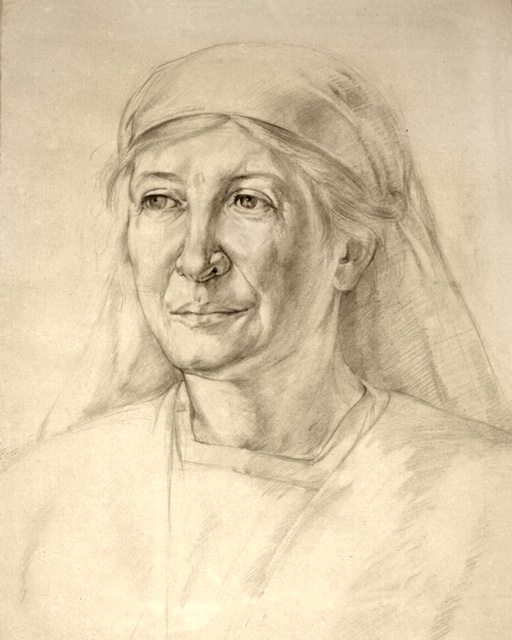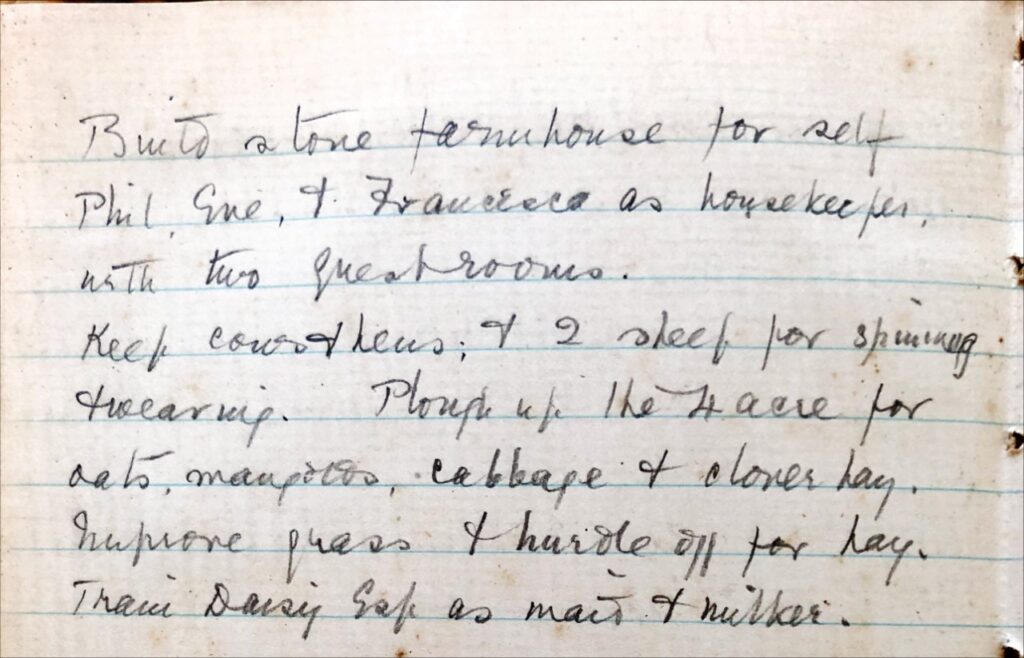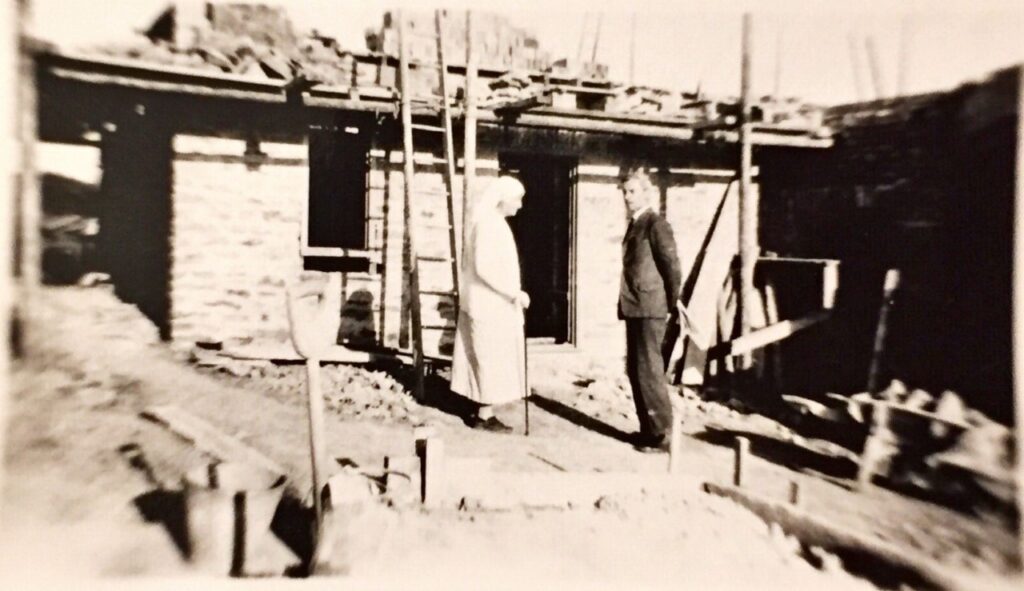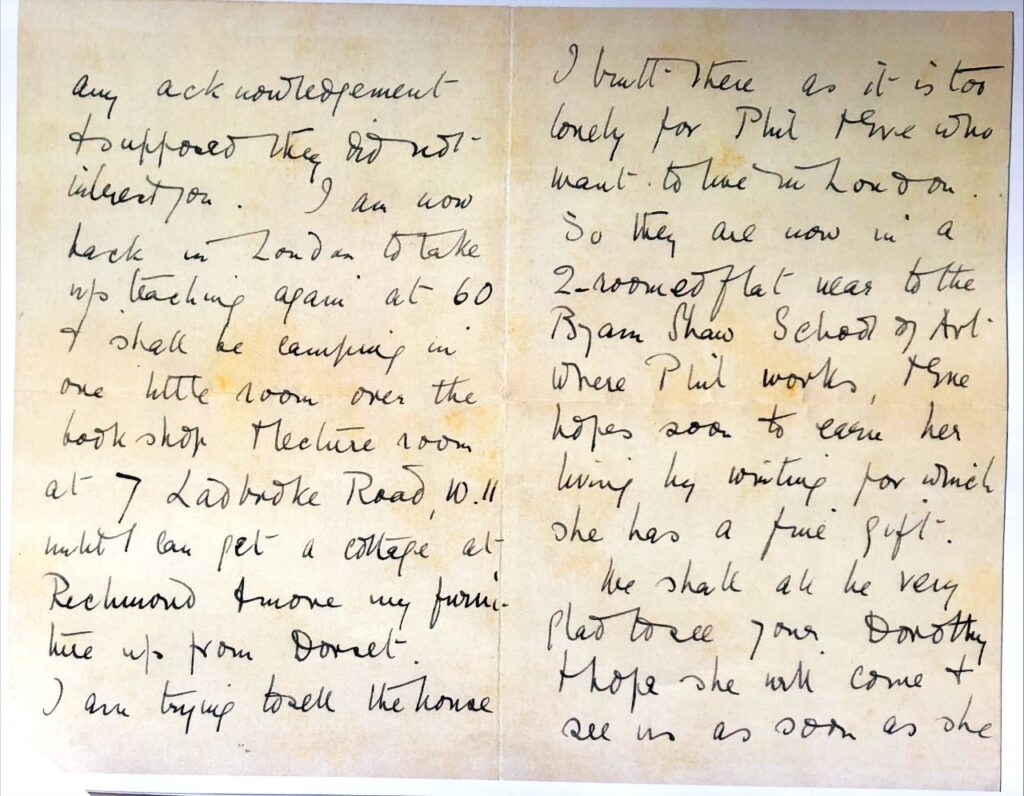
Miss Curtis (1867-1960) founded a community which existed just outside Burton Bradstock for almost 30 years in the mid 20th century. The members were known locally as The White Ladies because of the flowing white robes they wore. Recent research is focusing on papers relating to Miss Curtis and the community which are not held at DHC. These include:
- A Chronicle of the Community, type-written by her niece, Phil Hutchinson in 1972
- Letters written by Miss Curtis in the 1920s, 1930s and early 1940s to her sister Clara who was living in America
- Notebooks and a diary belonging to Miss Curtis
- A Prospectus for the ‘Bible Students’ Colony’, dated 1930.
Evidence has been found in this research that when she bought the 17 acre plot of field and scrub on the south side of the Coast Road between Burton and Swyre in 1921, Miss Curtis had no intention of building a community house. Moreover, the farmhouse which she did have built on the site, she put on the market in the late 1920s. If it had sold, the history of the site, which has also been the home of the Othona Community for over 50 years, would have been very different.
In 1921, Miss Curtis, a Christian mystic, teacher and author, was 53. Phil Hutchinson’s Chronicle states that she had moved to Dorset intending to live a life of retirement here. Miss Curtis had already had experience of leading a community at Cold Ash Common in Berkshire, called The Order of Silence, but it had recently closed and this had been a bitter blow to her.

She invited her nieces, Phil and Eve Hutchinson from New Zealand, to live with her in Dorset and by 1924, they were living in huts on the land. Miss Curtis wanted to provide a more permanent home and in a notebook from 1926 records her intention to,
‘Build stone farmhouse for self, Phil, Eve, & Francesca as housekeeper, with two guestrooms.’

This the building, now known as the Community House, was originally envisaged and built as a family home. In her Chronicle, Phil describes the early days of what was then known as Little Farm:
‘It had a fine dairy with thick slate shelves for dairy produce and storage shelves for bottled fruit and vegetables. Joined to the outside of the walled garden was a mouse-proof granary for storage of fresh fruit and roots and foodstuffs for the stock. This granary and the cow sheds formed the North side of a spacious enclosed yard for the cows and later goats, before they went out into pasture.’
Their life on the farm was short-lived however, as seen in letters written by Miss Curtis to her sister Clara living in America. Phil and Eve were finding it too lonely in Dorset and wanted to live in London, so Miss Curtis put the farmhouse on the market in around 1928.

She explains to Clara that she was intending to buy herself a cottage in Richmond once the sale had gone through. If she had sold Little Farm then, neither her own Christian Contemplatives Charity, nor Othona, would have existed in this part of the country.

Miss Curtis had restarted her bible teaching whilst in Dorset and students would come and stay to attend her lectures. Whilst she was waiting for the farmhouse to be sold, Miss Curtis had let rooms in it to some of these bible students to cover the costs of maintaining the building. Presumably because it did not sell, this arrangement continued and became more formalised, with a Prospectus dated 1930 describing the house as The Bible Students’ Colony. In this way, a family home became a community house, with the chapel and cloister added in 1937. Her community, the Christian Contemplatives’ Charity, became legally constituted as an independent charity in 1939.

Phil’s Chronicle continues to recount how during the Second World War, the house was requisitioned by the Army and the Sisters had to move out into other small dwellings on the land. In another of her letters to Clara, Miss Curtis describes how they had to store the main house’s furniture in their beloved chapel. The Community did not really recover after the war and by the late 1950s Miss Curtis was the last of them to remain living on the site. She died in 1960 at the age of 92. She had stipulated that the site could not be sold but that a successor community must be found and this was how the Othona Community came to take it on from 1965, with a small resident community continuing to live there to the present day.
—
A guest blog written for Dorset History Centre by Liz Howlett. Liz is a member of the Othona Community living on the site originally purchased by Miss Curtis in 1921, and is researching Miss Curtis and the community she founded in this place. If you are interested in learning more you can contact Liz directly: liz@othona-bb.org.uk


Interesting article, nicely illustrated with primary sources, thank you.
My mother, my 2 brothers and I spent several summer holidays in a cottage in the grounds during the fifties. Every evening we would attend a service in the Chapel, usually led by Sister Margaret. If anyone knows details of Sister Margaret I would be grateful if they could contact me. I remember she told my mother that I must not cross my legs during worship. She was a warm hearted person. She retired to Kensington, if I remember correctly, as before joining Miss Curtis’ Community she led a privileged life as a titled married lady but she gave that up to live the simple religious life.
My brothers and I enjoyed playing in the wild countryside and we leant to swim in the sea. We have many happy memories.